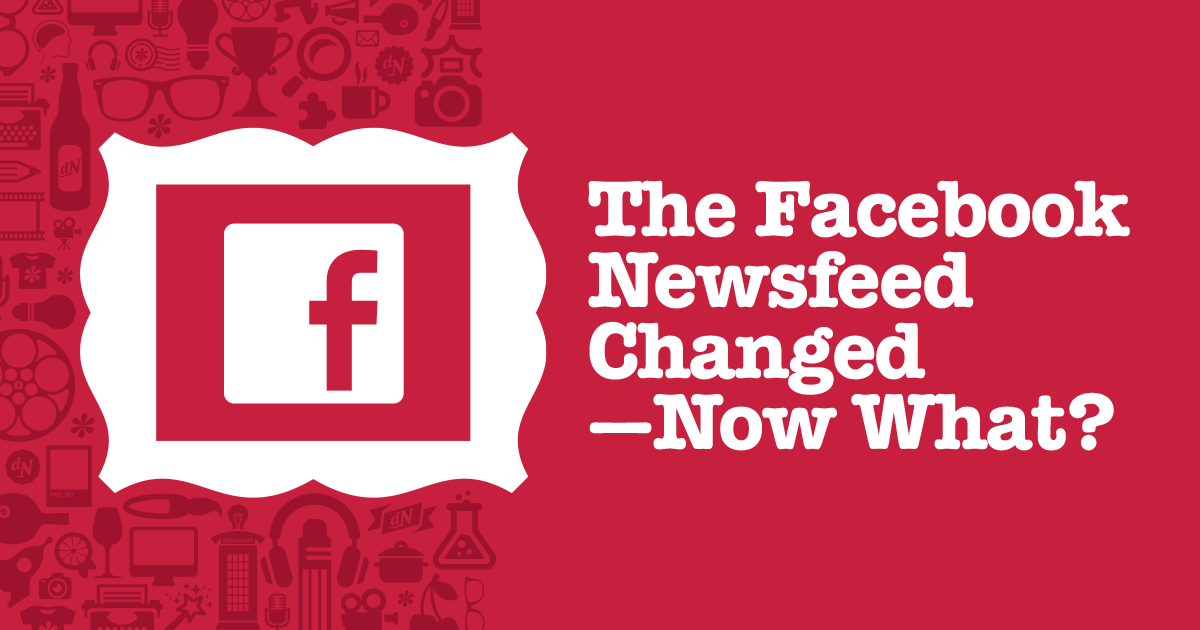On January 11, 2018, Facebook founder Mark Zuckerberg announced in a Facebook post that the company would make sweeping changes to its news feed.
Zuckerberg told users to “expect to see more from your friends, family and groups.” In other words—expect to see LESS from businesses, media and brands. Why? Facebook made the move citing research that found these types of posts have quickly become overwhelming to users.
It’s been a little over a month since the first changes were rolled out, and business pages are already seeing the impact on their “reach” metrics on organic (unpaid) posts. While these numbers may seem alarming at first, the move takes Facebook in a direction more in line with their initial business model as a SOCIAL network.
If your business’ Facebook reach took a nosedive after the announcement, don’t worry—your competition isn’t getting those much-loved eyes on their Facebook posts either. This is true across the board: it’s not just YOUR business page that is experiencing decreased numbers on Facebook—it’s everyone’s.
Consider this to be a period of “recalibration,” and remember—your posts may be reaching fewer people, but chances are, the people they’re reaching are more engaged with your brand and actually want to see your posts pop up on their feeds.
Keeping Up with the Zuck
Facebook, as always, will continue to be a valuable tool for digital marketing and community updates, so don’t jump ship yet if you don’t like the changes. As you get used to the news feed updates, there are a few things you can (and should) do to increase your digital impact with the social media golden child:
1. Ask your followers to prioritize your posts.
Much like the “unfollow” feature that Facebook has for personal accounts, users can unfollow business pages so they don’t see their posts in their news feeds. Thankfully, you can counteract the dreaded unfollow with another feature: “See First.” Users can select up to 30 pages to “see first” that will appear at the top of their news feed, allowing the selected businesses to skip the line, so to speak.
Don’t be afraid to ask your followers outright to prioritize your page. Chances are they’re frustrated that they haven’t seen your content lately, and they’ll be glad to give you “see first” status—just be sure to ask before your competitors do!
Not sure what to say? We’ve got you covered! Download our sample posts and feel free to use one of the graphics provided at the end of this blog.
2. Encourage your followers to engage with your brand in other ways.
Facebook cannot (and should not) be your silver bullet—it should only be one part of your marketing mix. Consider it as a way to share content to help your customers engage with your product or brand.
Remind your Facebook users to follow you on Instagram, Twitter and any other social networks that you use regularly. It’s also a good idea to encourage them to subscribe to your newsletter or follow your blog.
P.S. Never forget the purpose of marketing on this platform—it isn’t to make a sale…at least not right away. Instead, it’s meant to encourage engagement and goodwill towards your brand. (And if you succeed at that—it will ultimately end in a sale.)
3. Create and Engage with Groups
Groups are a subsection of Facebook that allow you to create and participate in message board-style communities with like-minded Facebook users. The new changes to the news feed will once again favor these communities, showing “Group Posts” in your news feed more often.
This is a dramatic shift after Facebook discontinued their standalone Groups app amid speculation that the company was cutting the extension. Instead, Facebook gave Group Admins much more control over their communities. Either find communities and groups that fit your business model OR create a Facebook Group for your own personal community of customers and users.
4. Remove the Safety Net: Live Videos
In Zuckerberg’s post, he reiterated the importance of social connections instead of simply consuming content:
“There are many tight-knit communities around TV shows and sports teams. We’ve seen people interact way more around live videos than regular ones. Some news helps start conversations on important issues. But too often today, watching video, reading news or getting a page update is just a passive experience.”
See that note about Live video receiving more interactions than regular ones? While he doesn’t come right out and say it, that can be construed as a peak into their algorithm.
Companies are afraid to partake in Live video because of its intimidating underpinnings. But as viewers are begging for more AUTHENTIC (not overproduced) content, Facebook is prioritizing this medium.
Are there ways that you can interview employees or give your followers a behind-the-scenes peak at what’s happening at your company? Facebook Live is a great opportunity to authentically and organically engage with your community. And if you’re worried about messing up, Facebook allows you to delete live videos so that they aren’t automatically published on your page.
Don’t Fear—Adjust
It’s important to remember that these actions were taken to increase “meaningful interactions” with users’ friends—not penalize your business. This expansive shift treats all Facebook users as one homogeneous group. Find out how your customers prefer to get your communications and focus on those channels. While best practices are rooted in research, remember, it’s a BEST practice—not the only practice!
Use these interactive posts to start prioritizing your Facebook news feed and get seen first today!
{{cta(‘37772cb7-aac0-4d49-b5f0-498c577629c1’)}}


